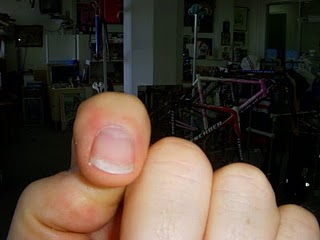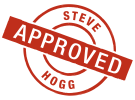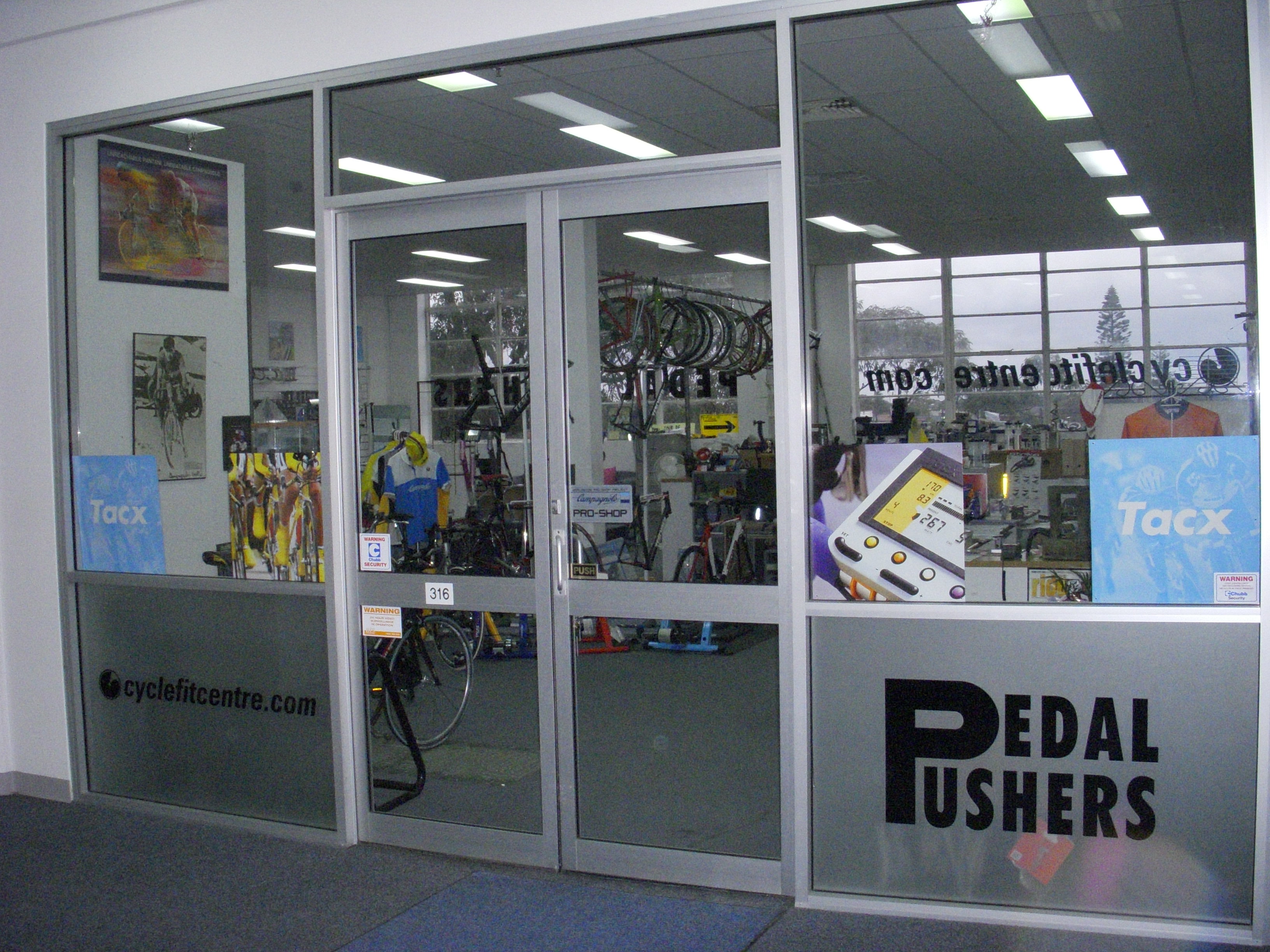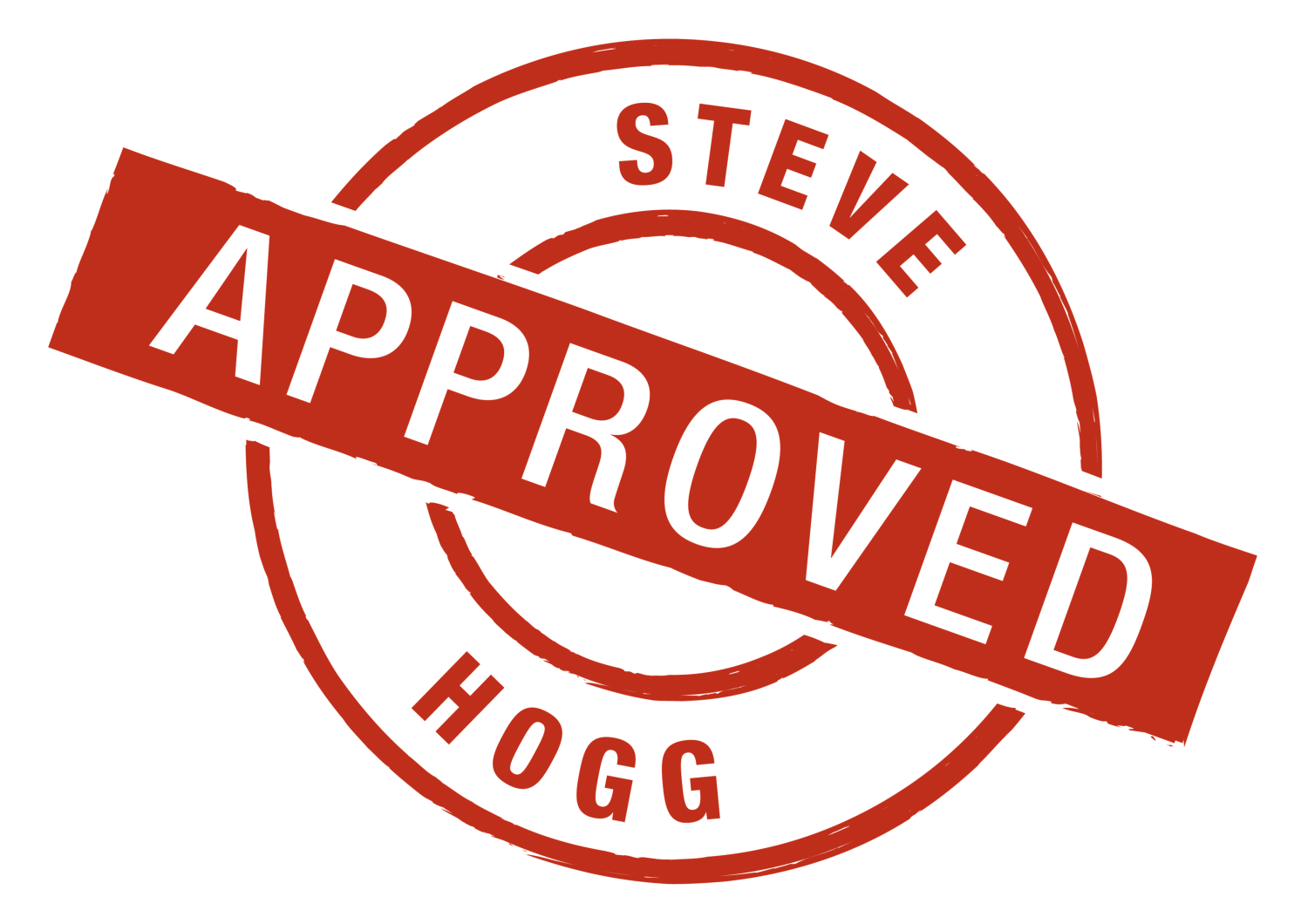Last Updated on October 16, 2019 by Steve Hogg
 My index finger nail is one of my most commonly used fitting tools. If it isn’t long enough it won’t do its job. That job is to find the joint space of the 1st and 5th MTP joints; i.e, the joint space of the base knuckle of the big toe (ball of the foot) and small toe respectively.
My index finger nail is one of my most commonly used fitting tools. If it isn’t long enough it won’t do its job. That job is to find the joint space of the 1st and 5th MTP joints; i.e, the joint space of the base knuckle of the big toe (ball of the foot) and small toe respectively.
Once a client interview and off bike assessment is completed, about 70% of the remaining time is spent on the feet in one way or another. There is a lot of ground to cover with the feet:
- The functioning of the feedback loop between central nervous system and feet has to be clarified and optimised
- Optimal cant of each foot has to be determined
- Optimal degree of arch support has to be determined
- If necessary, and it often is, the optimal degree of shimming needs to be determined
But before any of that occurs, the fitter needs a reference point on the outside of the shoe as to where the foot is inside the shoe. I’ve used a variety of methods, all of which have merit, but the simplest, most foolproof and most repeatable method was shown to me by a tall, drawlin’ Texan named Jerry Gerlich of Castle Hill Fitness in Austin. (http://www.castlehillfitness.com/cycling.php)
Have your client stand barefooted on a hard surface. Using the index fingernail, feel for the joint space of the 1st (and if you are me, also the 5th MTP) joint. It is usually in the approximate centre of the bulge of the bony protrusion of the joint but there is a lot of variability in how obvious it will be. If you are not certain, press in with the nail and leave an indent in the skin. Then place the tip of a pen in that indent at the vertical midpoint. Gently dorsiflex the toe.
Did the pen tip move?
If yes, you have not found the joint centre so try again with the fingernail. If no, then you’ve found it and can mark the point with a short vertical line with a fine pen.
Now tape a cable end crimp to that mark and ask the client to put their shoe on without a sock. Feel for the protrusion of the crimp in the upper of the shoe and mark it with a fine marker pen.
Now repeat on the other foot. If the nature of the shoe upper makes it hard to feel a cable end crimp, use the knot off a medium size zip tie as they are larger and protrude further making them easier to feel through the shoe upper.
Once done, place your shoe in the pedal of your bike (without your foot in the shoe) on an indoor trainer. Move to the other side of the bike and using a T square measure the horizontal distance between the mark you have placed on your shoe and the centre of the pedal axle with crank forward and horizontal and shoe levelled between where the sole joins the upper at mid heel and where the sole joins the upper in mid forefoot.. Measure at both extremes of shoe in pedal rotational movement (heel in / heel out) and halve the difference. You now know your cleat position relative to the centre of the joint axis of your 1st MTP joint!
What ever your philosophy of cleat positioning (all you wish know about cleat positioning here), this is a simple, accurate way to establish a reference point on the outside of the shoe.
See this video for more: http://vimeo.com/9589645, and don’t chew your nails. You’re damaging a valuable tool!
Have fun.
Note: Often, more specific answers to your questions can be found in the Comments below or in the eBooks section and FAQ page.
To learn more about bike fit products offered by Steve, click here.
Do you have a bike fit success story? Please go here to share.
Thank you for reading, return to the Blog page here or please comment below.This Post Has 4 Comments
Comments are closed.







Hello, Steve, in regards to cleat position, my left foot is about a half a size smaller than my right. I am afraid if I set up my left foot for proper placement, it will throw off my leg angles by pulling my left leg forward. Will I have to shim my cleat to compensate, or am I worrying for nothing?
G’day Hans,
It is common to have a half size difference between feet. Usually right footed people have a longer left foot and left footed people have a longer right foot. If you are right footed (kick a ball with right foot) and have a smaller left foot, it indicates that you either have a life long pelvic tilt or a leg length difference and it is worth having both possibilities checked out.
To answer your question though; half a shoe size is only 3mm in length. The key is to work through the method outlined to determine whether the 1st MTP joint centre is. You may find that there is little or no difference in their placement on each foot despite the foot length difference. Assuming all of the half size difference is in the foot and the 1st MTP joint centres are in a 3mm different position, then in respect of leg length, this will have negligible impact on relative leg position.
Steve,
Thank you for your expeditious reply. Yes, I am right footed and, if my memory serves me correctly, my right foot is the bigger one. The funny thing is, I visited a chiropractor yesterday, and after being put through a back procedure—turns out my vertebrae were a little out of whack—and an ankle decompression—at least that’s what I want to call it because my left foot was pushed up a little into my ankle—I had him check for an LLD. The verdict ended up being that my legs were equal in length, and while I didn’t ask specifically, he had made no mention of pelvic tilt variations. That being said, I do appreciate your feedback and I think either is still possible, at least until I get an x-ray or something of the like. I’m going to make the adjustments today to my cleats and hope that some of the pain I’ve been having is relieved. The chiropractor suggested I pick up some glucosamine sulfate per the popping he felt while flexing my knee to repair the cartilage. Thank you again for our words!
You’re welcome Hans.